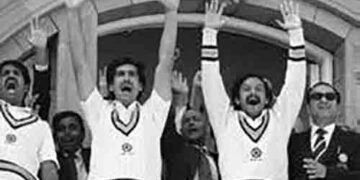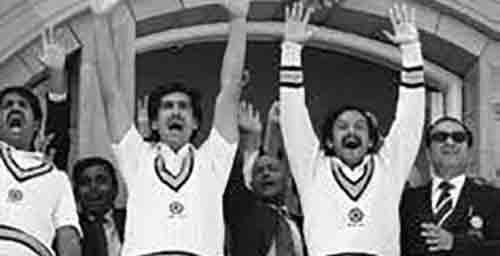 THE India-England sporting ties date back to the early 1900s; and cricket has been the main connecting point between the two countries. There was an unmistakable touch of royalty also as it was only the Maharajas of various states who had the privilege of captaining the Indian team.
THE India-England sporting ties date back to the early 1900s; and cricket has been the main connecting point between the two countries. There was an unmistakable touch of royalty also as it was only the Maharajas of various states who had the privilege of captaining the Indian team.
The Indian cricket team led by Maharaja of Patiala Bhupinder Singh embarked on its maiden historic tour of England in June 1911. The team comprised six Parsees, five Hindus and three Muslims. Ranjit Singhji was the first choice for captain but he opted out due to some personal reasons. The team had a limited success as it could manage only one win from the 23 matches.
Buzz in the media
India next toured England in 1932. This time there was a mild buzz in the English media with some leading dailies carrying small news items about the Indian team before the tour. India, which had been recognised by the International Cricket Council (ICC), was led by the Maharaja of Porbundar. The great CK Nayudu was part of this team as India went on to lose the only Test at the iconic Lords.
The third time the Indians toured England was in 1936; it was the Maharaja of Vizianagram who despite not being a good batsman or bowler managed to skipper a side which included the likes of CK Nayudu and Vijay Merchant. This was the first full-fledged series in which the visitors played three Tests. This tour was most known for the bitter fight between the Late Lala Amarnath and Maharaja of Vizianagram which is the first documented scandal of Indian cricket which led to the expulsion of Lala Amarnath.
Lala Amarnath expulsion
Rajinder Amarnath, the youngest son of Lala Amarnath said, “that his father was quite outspoken and always an upright person. He disagreed with the Maharaja on many things and openly questioned him. Things got so bad that an enraged Maharaja ordered Lala to be expelled to India. Till his death (Lala died in 2000), my father was adamant that he had done no wrong to be expelled and that it was the arrogance of the Maharaja,” said Rajinder Amarnath.
The Indian team which toured England in the next tour in 1946 was led by Iftekhar Ali Khan, the Nawab of Pataudi, who happened to be the father of Mansoor Ali Khan Pataudi. The team came up with a much better performance as England could win only one Test while the other two were drawn.
After gaining Independence, India toured in 1952 for the first time under the tricolor. This time the team was led by Vinoo Mankad as the era of Maharaja’s had come to an end. Thereafter, the Indian team frequently toured England once in every four years and the England team came to India on a reciprocal basis.
Tennis connection
The hallowed turf of grass at Wimbledon has been another major connecting point between England and India. The legendary Ramanathan Krishnan was a frequent fixture at Wimbledon as he played there for 15 long years. He is the only Indian to make it to the semi-finals of this championship in 1960 and 1961.
He also won the Junior Wimbledon championships in 1954, becoming the first Asian player to win a title at the All England Club.
Speaking to Blitz India from Chennai, the tennis legend said that he had to change as many as four flights to make the trip to England. “Those days there were no direct flights and I had to change multiple flights in order to make it to Wimbledon,” he said.
Things complicated
Ramanathan also said that things were much more complicated for a player to reach and acclimatise to the conditions in his days than now. ‘With the automation and computerisation nowadays, everything is available on a click.
But in our days, we (the players) had to fend for everything. This included finding a decent place to eat since I was a vegetarian and there were hardly any veg restaurants those days. I remember on three occasions I carried some dal and rice with me from Madras (as Chennai was called then) to London,” said Krishnan.
Even before Ramanathan Krishnan participated at Wimbledon, there were some Indians, like Dilip Bose, who played in this championships in 1950 to 1952.
















